I first backpacked Mexico when I was in my twenties, travelling north to south mostly along the Pacific. I’ve since been going back to Mexico, exploring its many corners, and ten years on I’m still coming back for more.
So, let me fill you in on all the important things to know!
Plan your backpacking trip to Mexico
Why Go Backpacking in Mexico
Mexico is one of the best backpacking countries in the world. If you ask me, it’s right up there with Thailand, Bali, Peru, or Western Europe in terms of beginner-friendly destinations where you can always have a great time.
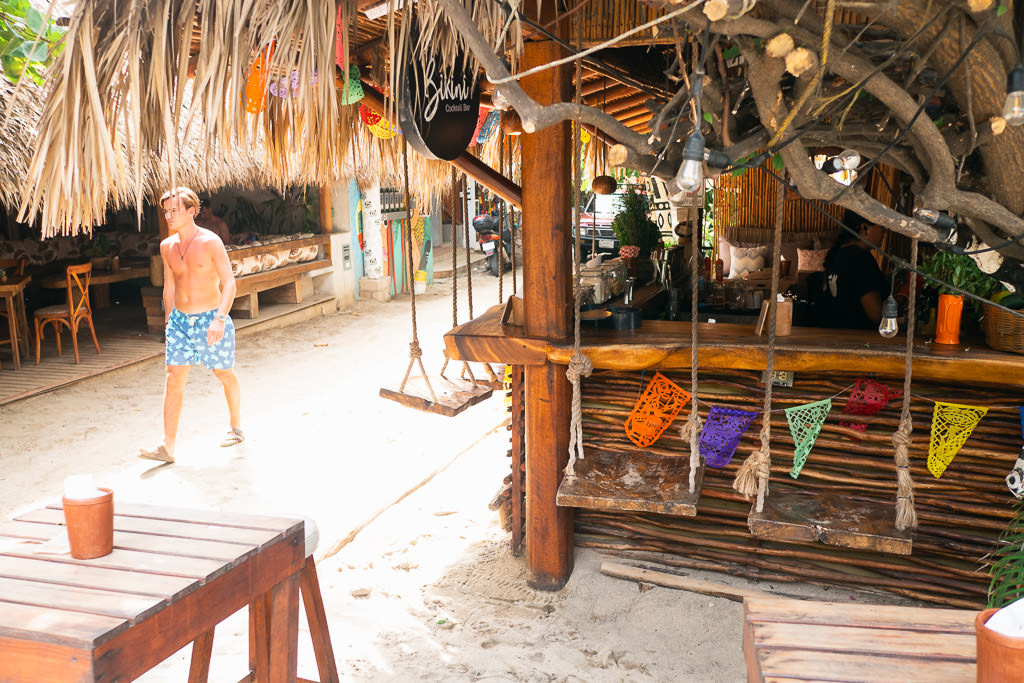
Cost of travel: While it’s gotten a little bit more expensive recently due to currency fluctuations, Mexico is still among the more affordable countries to travel to. I recommend a budget of around $50 a day (post-inflation).
Variety of experiences: From cities and cuisine to nature and beaches, it all makes Mexico a perfect backpacking destination. Surfing, scuba diving, trekking, etc. are all on the menu too.
Diverse geography: Don’t laugh, but I always thought Mexico was just deserts with cacti. It’s actually very mountainous, has many temperate-like zones, as well as lush tropical rainforests in the south. You can see several totally different environments in one trip.
The food: You haven’t had Mexican food until you’ve had it in Mexico! Best of all, there’s a lot of great street food and affordable set meals, so you can eat really well even on a budget.
The backpacker scene: If you’re travelling solo, have no fear! There is a well-established backpacker trail and hostel scene in Mexico. The many surfer communities and digital nomad hubs in Mexico also add to the friendly vibe.
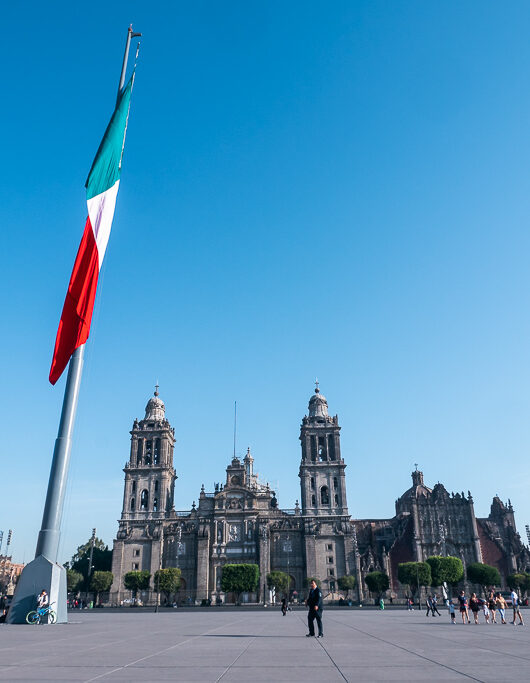
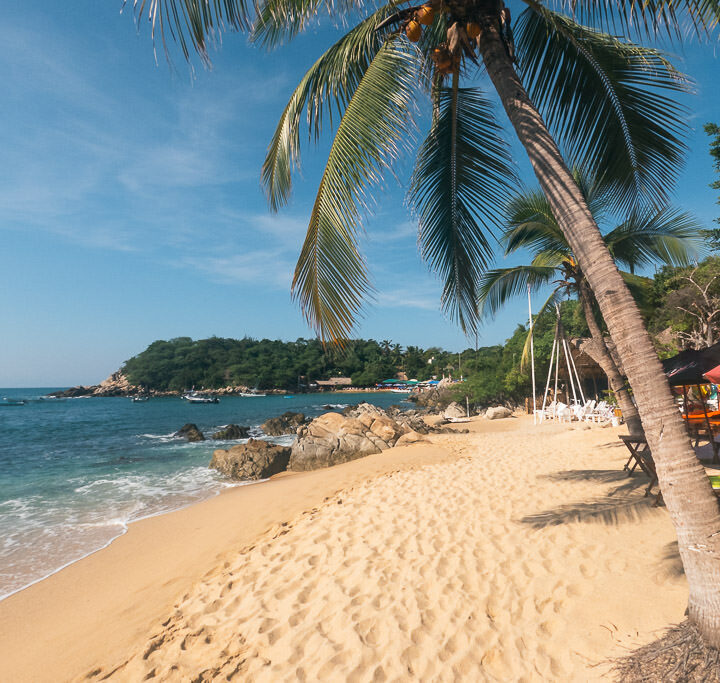
Whether you’re a city person and want to visit every museum, or you’d prefer lazing in a hammock, you can go either way in Mexico.
First time backpacking in Mexico? Then don’t miss my personal travel tips and route advice in this video:
Hostel Scene in Mexico
Not everyone who backpacks stays in hostels, but for most of us, it’s a big part of the experience.
I’m happy to say the hostels in Mexico are top-notch!
You can often choose from more basic local hostels, which are good if you’re on a tight budget, or trendier modern hostels with nicer facilities and decor. The latter cost a bit more but can also be more comfortable.
The trendier and more modern hostels can especially be found in Mexico City, Oaxaca, Cancun, and Tulum. Some popular chains include Che, Casa Pepe, Viajero, and Selina.
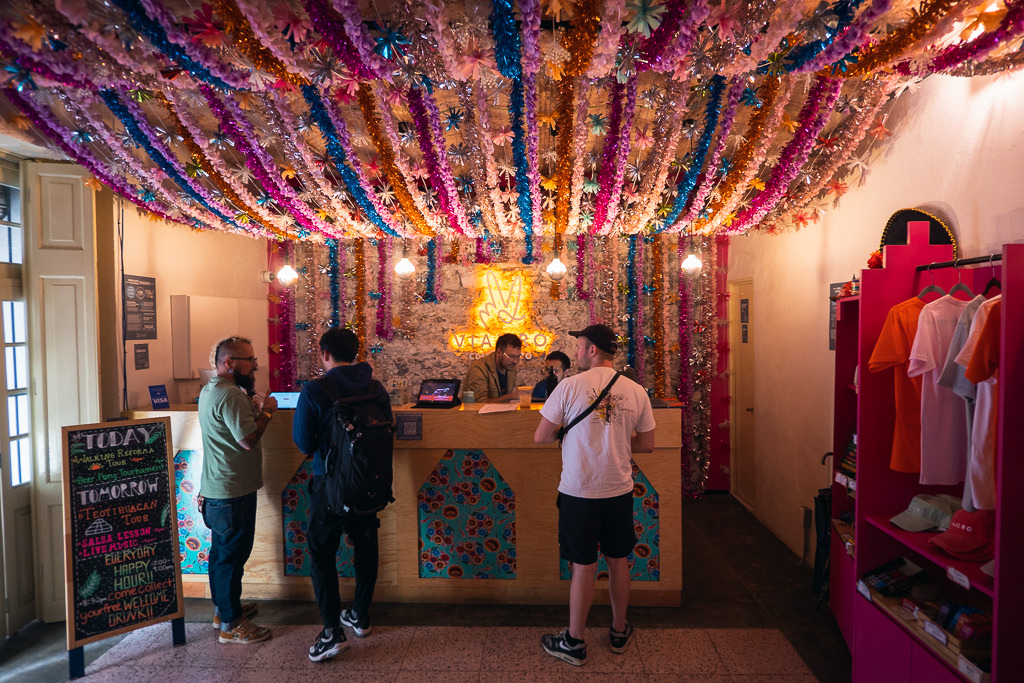
Hostels are ideal if you’re travelling solo and looking for a social atmosphere. The people you meet from all over the world will amaze you, and most hostels offer awesome activities such as cooking classes, salsa lessons, and yoga.
The best place online to find cheap hostels, as always, is Hostelworld.com. You can check for hostels in Mexico here.
Hostel costs
The costs depends hugely on where you are. Places like Mexico City and Cancun are relatively expensive because you can fly in directly, so more people visit them on short trips. They are also just more expensive locations in general. Dorm beds are easily $20 or more per night in the capital, but they can be as little as $8 in other parts of Mexico.
Cheaper places include cities like Valladolid, Merida, Guadalajara, and Puebla, or smaller towns like San Cristobal, Mazunte, Palenque, and plenty of others.
Some hostel suggestions
If your trip starts in the capital, check my CDMX hostels tips. Mexico City has a lot of nicer premium hostels which can be a great choice if you want to have an easy start after arriving in Mexico.
However, I’m usually a sucker for more bohemian-style or locally-owned hostels away from the big cities. You can find those in Oaxaca State or Chiapas a lot, for example.
I have fond memories of spending my evenings around a fire pit in the garden of Rossco Hostel in San Cristobal. At Mama’s Home in Tulum, I was having home-cooked meals every day (cooked by, you guessed it, the resident mama). Such homely hostels often made me stay longer than planned.
The hostel scene has a major surfer vibe in places like Puerto Escondido, thanks to the big waves on the Pacific. The surfing community usually brings lots of fun cafes, bars, and good vibes, so these can be fun places to stick around. Hostels in PE like La Escondida and Huitzilin Hostal remind me a bit of a Bali vibe.
If you’re looking for a wild time with other backpackers from all over the world then definitely join the party hostels in Playa del Carmen or Cancun.
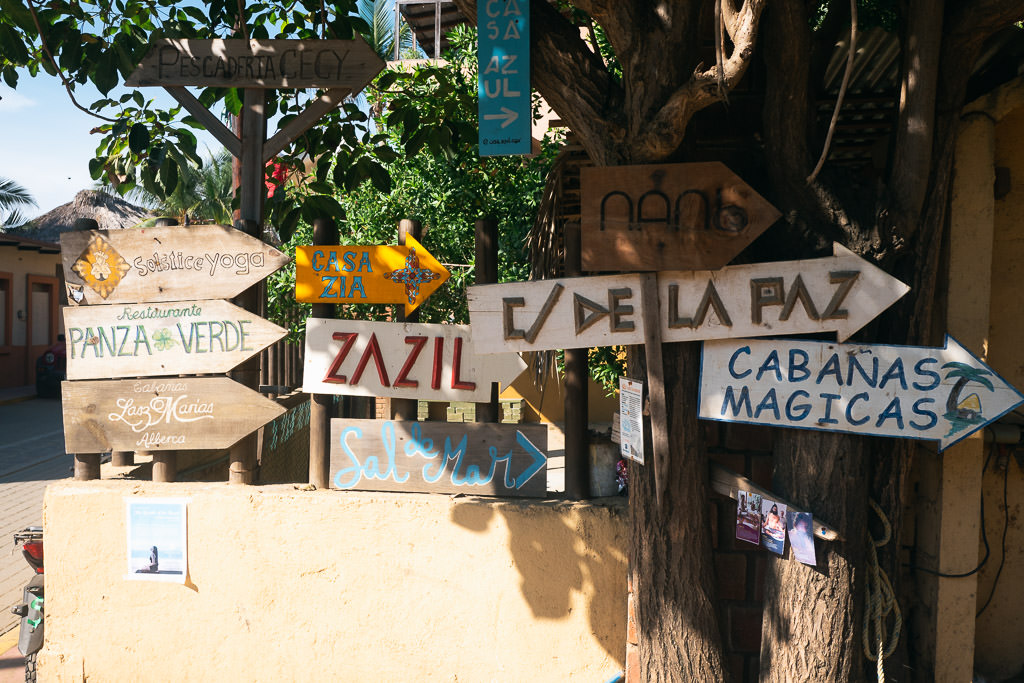
| Hostel | Why I Love It |
| Mexico City: Casa Pepe |
Perfectly located in the heart of the city and has so many activities going on. It’s a bit more expensive but it’s a great social place. |
| Oaxaca: Hostal Luz de Luna Nuyoo |
For $11 a night, it’s an amazing experience. The staff is really friendly and you’re close to some of the most incredible restaurants in Oaxaca. |
| Puerto Escondido: Tower Bridge Hostel |
Puerto Escondido gets incredibly hot, so having a hostel with a pool is an absolute must. |
| San Cristobal: Posada del Abuelito |
This small hostel fills up so quickly, so it’s one of those places you’ll want to book. |
| Holbox: Tribu Hostel |
This is the perfect hostel for all my yogi’s, offering free classes in the morning. |
| Tulum Mama’s Home |
Free breakfast and lots of tequila shots from Mama await you. |
Other accommodations
If you’re looking for a bit more privacy, you can opt for private rooms in hostels which are usually around $30 a night (but the price depends on what town you’re in). You can also often find hotel rooms in the same price range by looking around on sites like Booking.com.
While I’ve managed to stay in budget rooms for around $20 per night a bunch of times in Mexico, they were honestly not the best (I’ll spare you the details…). I’d say $30/night is the minimum for at least a decent-budget room with a shared or ensuite bathroom.
The Classic Backpacking Route
Okay, so where to go?
To be clear: Mexico is huge. It’s almost as big as all the countries in Central America combined. That’s why it can be a bit overwhelming to know where to start.
Unless you have, say, six months to travel around Mexico, you need to just accept the fact that you won’t see it all, and that’s okay. Even with limited time, there is so much to see.
A lot of backpackers follow the classic route from Mexico City to the Yucatan Peninsula:
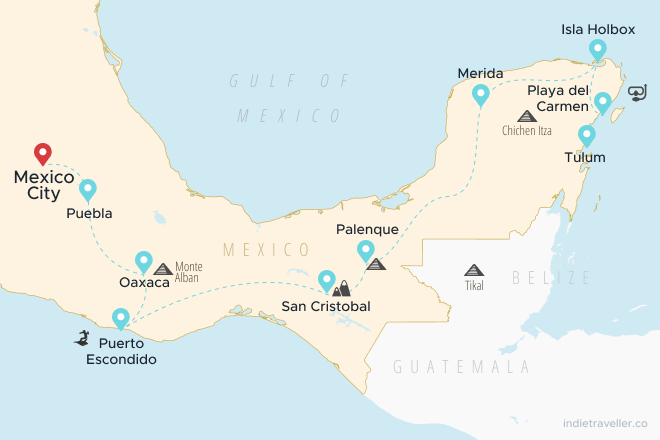
Start your journey in Mexico City, which is the perfect starting point since most flights go to the capital. Most backpackers then head to Oaxaca, home to some of the yummiest moles and tlayudas you’ll ever have.
From there, head down to the stunning beaches of Puerto Escondido. This used to be a 10+ hour drive, but a new road now gets you there in just 3 hours. It has nice sandy beaches, awesome vibes, and a plethora of beach activities. If you’re big on surfing, Escondido is your paradise.
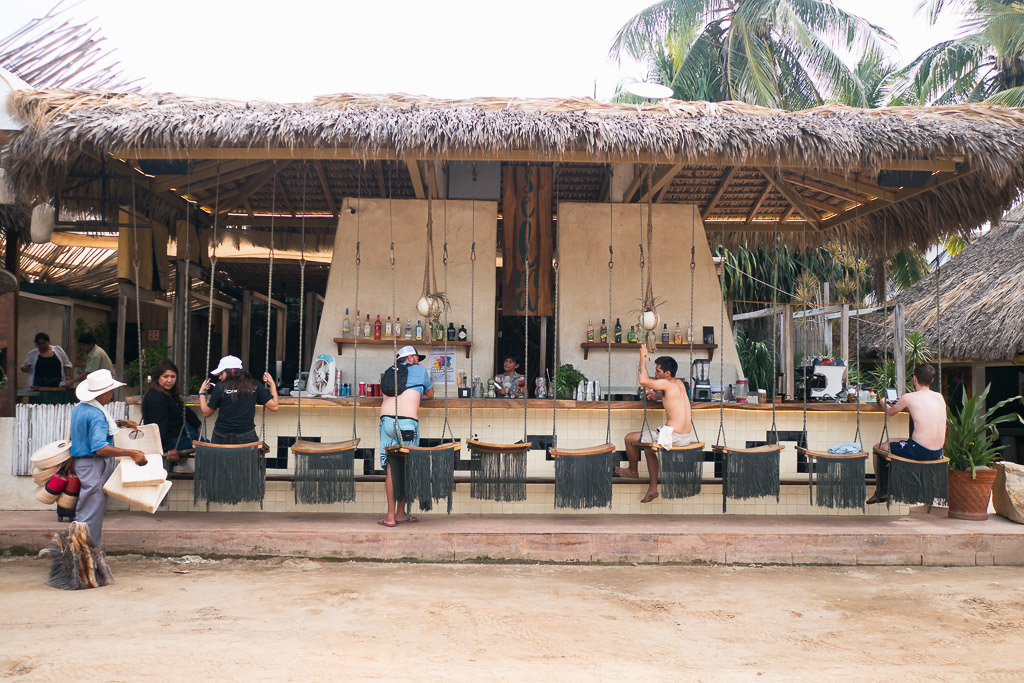
Next up, hop on a bus and head off to Chiapas. The southernmost state of Mexico is home to some of the most stunning waterfalls and jungles you’ve ever seen. It’s higher up in the mountains, so you’ll be going from some of the hottest temperatures in Mexico to some of the coldest.
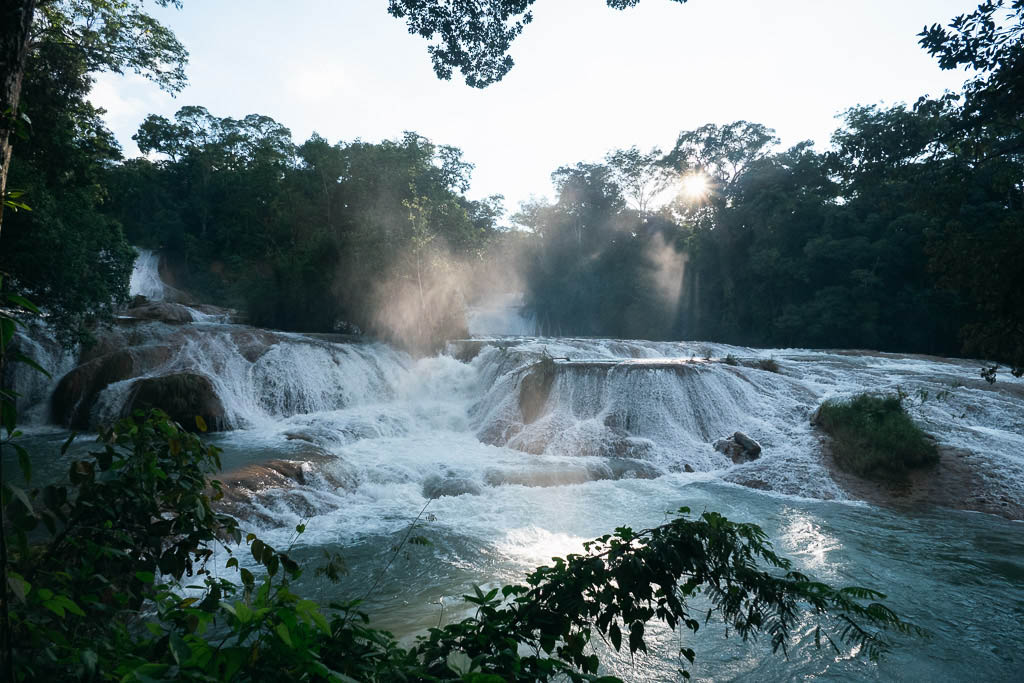
After a few days in the old colonial town of San Cristobal de las Casas, transition to the Mayan ruins in Palenque. The ancient ruins are so impressive, you won’t be able to take your eyes off them.
Don’t miss my guides to San Cristobal de las Casas and Palenque, the two main spots in Chiapas. The state as a whole is not anywhere near as touristy as the rest of Mexico. It’s near the border with Guatemala and has one of the largest indigenous populations, so Chiapas has a different feel. It’s great for an adventure!
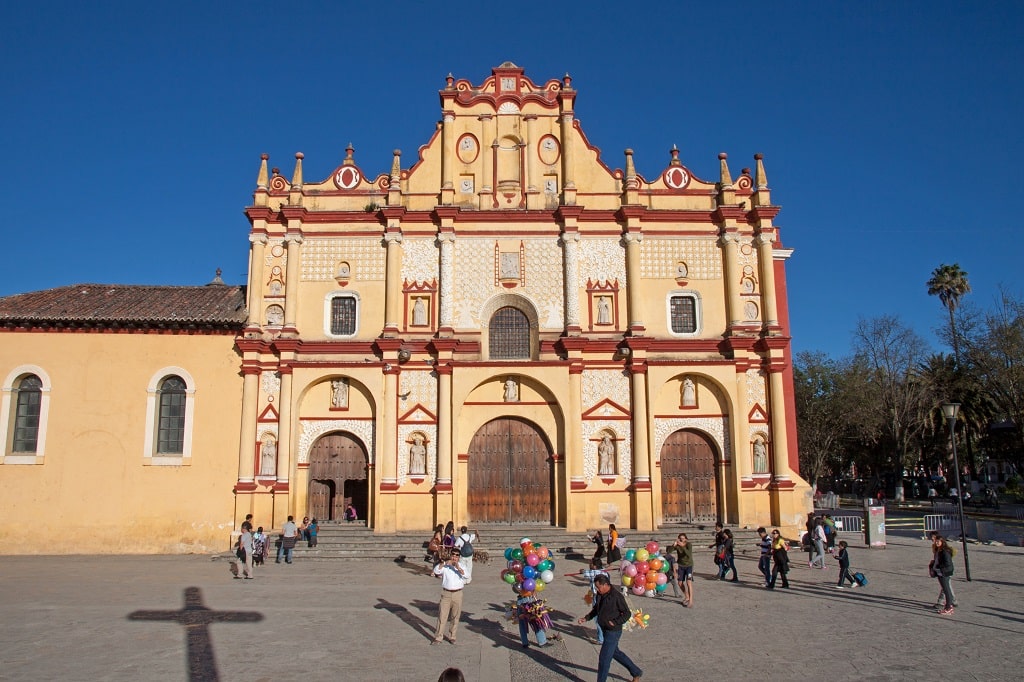
From there, we are making our way to the Yucatan, starting in Merida where you can have a day at the beach and a day in the city.
Don’t miss swimming in the cenotes. These caves and sinkholes with turquoise waters are surrounded by magical jungles. Merida is also the closest town to Chichen Itza, the most famous Mayan temple ruin, making it the perfect place to stay for a day trip.
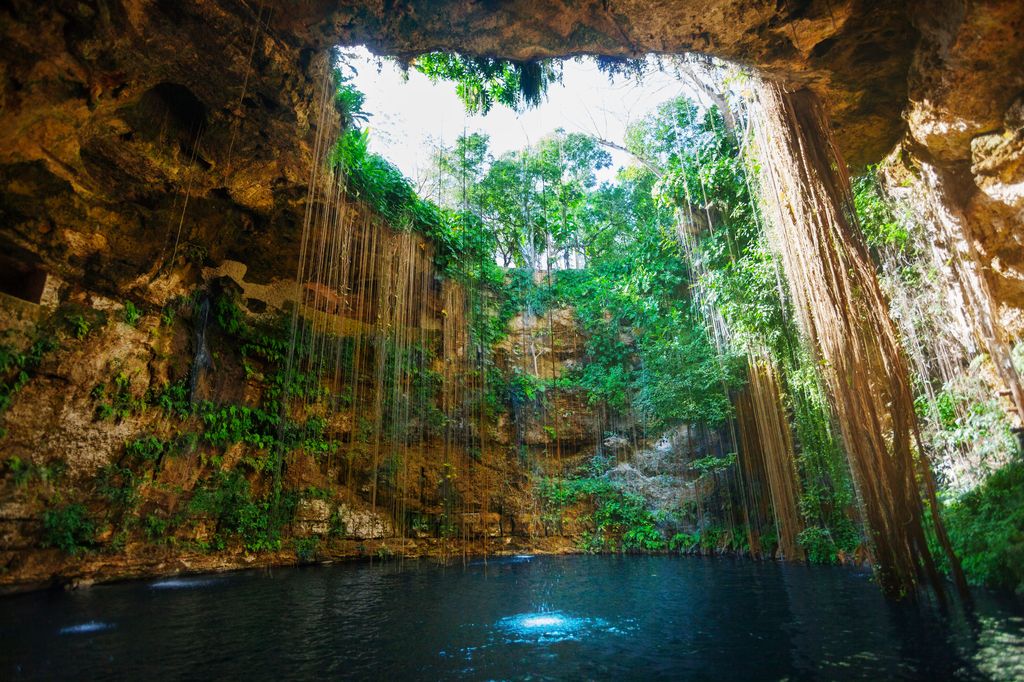
From there, head down to one of the local’s favorite spots, Holbox. I love this island, there are no cars allowed, only golf carts and bikes. Enjoy a few days of relaxing on the beach, fishing for lobster, and swimming with whale sharks.
You’ll then pass through Cancun, but we aren’t staying, we’re on our way to the adventure capital of Mexico, Tulum!
Although it’s become a hugely upscale destination in recent years, with many high-end resorts catering mainly to Americans on a brief stay, you can be a backpacker in Tulum. The key is to stay in the town itself where it’s cheap and to rent bicycles or motorbikes to take the short trip to the beach.
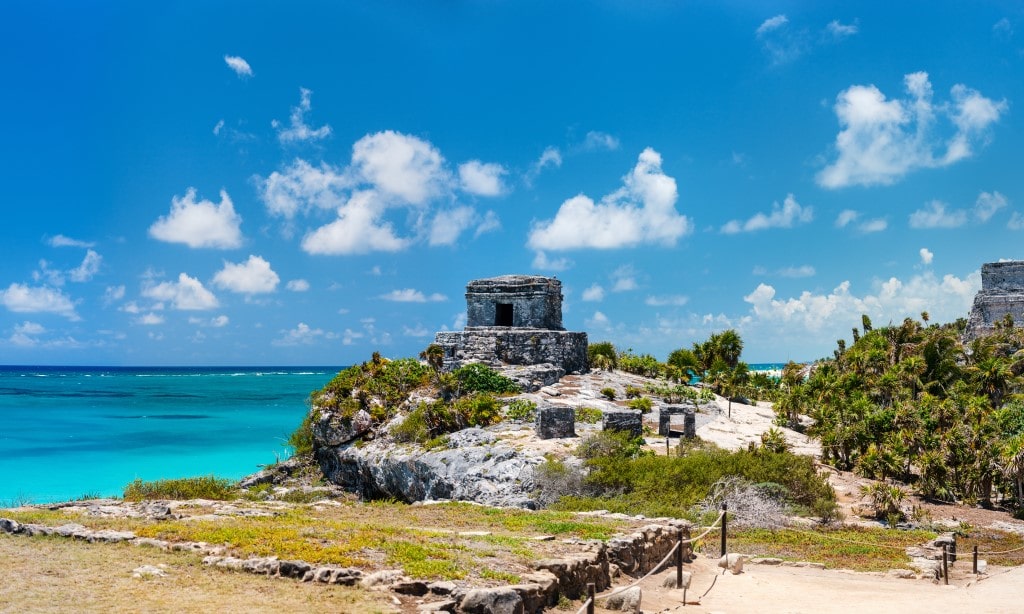
Once you reach Tulum, you have a few options, if you’re heading further south into Central America, then head into Belize to continue your adventure. If not, make a pit stop in Playa Del Carmen, or Isla Mujeres for a few days before catching a flight out of Cancun.
For a slower-paced and potentially deeper experience, I suggest dedicating two months to this route. However, if that’s not possible, at least a month is recommended to get a great taste of these regions of Mexico.
Top Experiences in Mexico
Usually, countries have like two to three highlights but Mexico literally has like 100 highlights. Okay, maybe that’s a bit of an exaggeration, but there’s a lot!
Here are some of my favorites.
Grab your Scuba Certification in Tulum, you can learn in the cenotes and explore the magical underground rivers. Or dive at the reefs in Isla Mujeres.
Float down the ancient canals of Xochimilco in Mexico City. Join a group of travelers and listen to mariachi bands while having a fiesta on colorful boats.
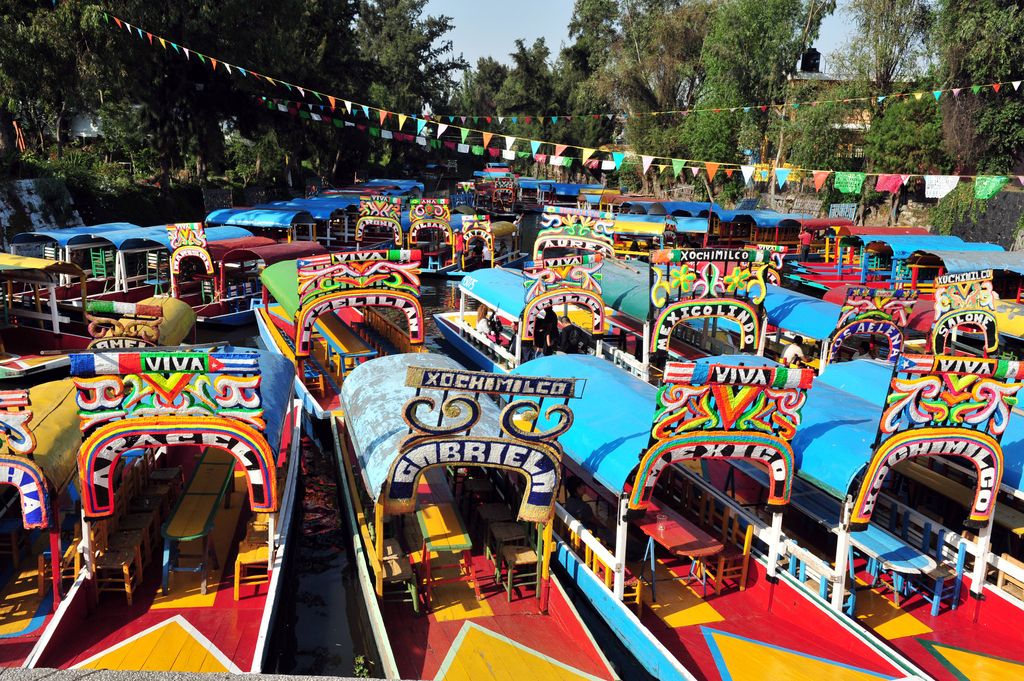
Explore ancient cities like Chichen Itza or Palenque to get a glimpse into the life that used to be there during Mayan times.
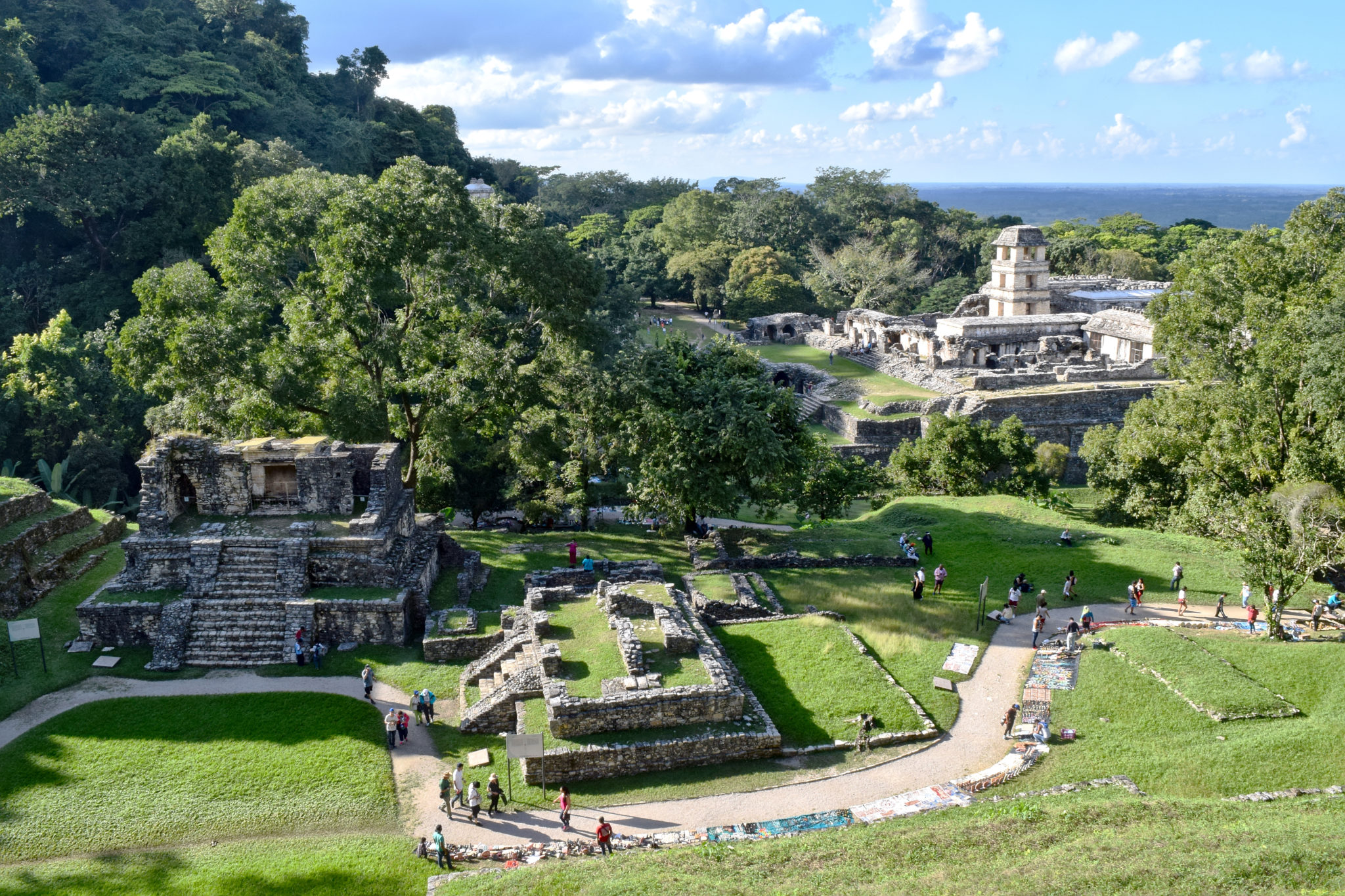
Ride a wave or two in Puerto Escondido. But get ready, the waves are pretty big here!
Catch a Lucha Libre fight in Mexico City. It’s one of the most unique experiences you can have! Men with masks and capes wrestling each other – it’s crazy!
And lastly, what’s Mexico without some Tequila and tacos? Enjoy a tequila tour and try some of the best tacos in Mexico City.
Is Backpacking Mexico Safe?
Like anywhere in the world, I highly recommend traveling with caution and common sense. When traveling to Mexico, make sure to take extra precautions such as avoiding walking alone at night (especially in big cities) and being aware of your surroundings anytime you’re out exploring.
I’m sure everyone back home has warned you of the cartels and horror stories from Mexico. We know that they mean well — they just want you to be safe.
But based on my personal experience, I can assure you that backpacking in Mexico is a safe and enjoyable experience.
Most of the problems in Mexico are restricted to very specific and easily avoidable regions (they’re mostly in the far north and the southwest coast of Mexico). Not going to Mexico because of these distant trouble spots is a bit like, say, refusing to visit Miami because you heard some bad things about Seattle. Mexico is a federation consisting of 32 (!) different states, and the situation in the backpacker-friendly areas is luckily very different from the known trouble spots.
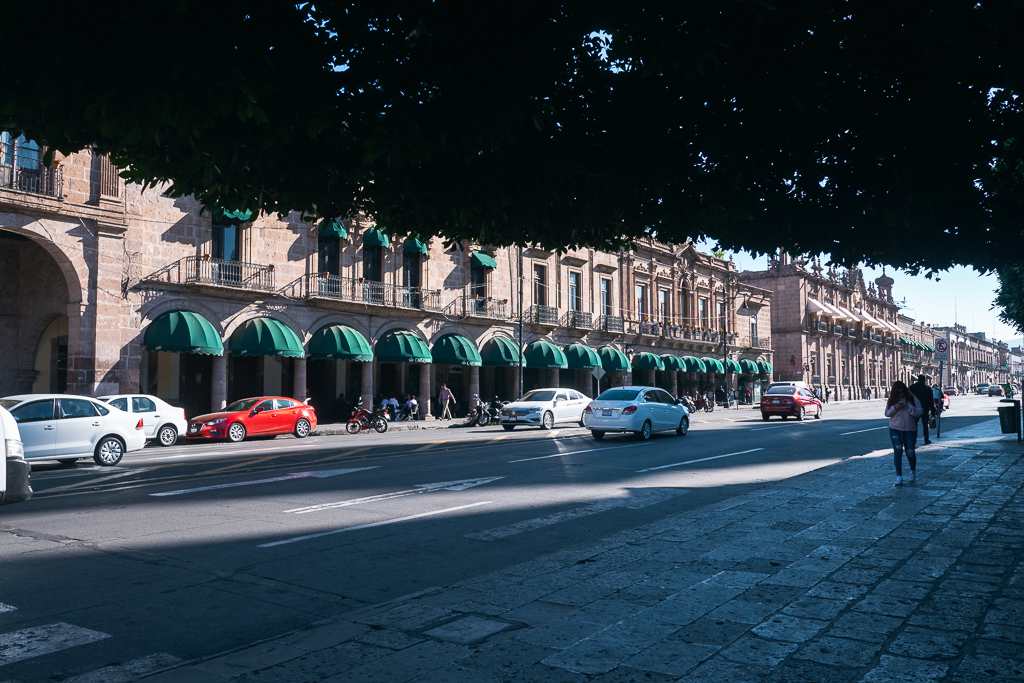
Of course, as anywhere, be sure to take care of your belongings and don’t give thieves any easy opportunities. In big cities like Mexico City, I recommend taking taxis or ride-shares (like Uber) versus walking around late at night or taking the bus. The most important thing is to stay alert and aware of your surroundings and you should be fine.
The coach bus systems between the cities are reliable and many other travelers are making their way through the country. You can pair up with them if you don’t want to be alone. But tourism is a major industry in Mexico, so they prioritize our safety because they want us to keep coming.
Backpacker Budget for Mexico
Mexico used to be one of the most budget-friendly countries in all of Latin America, but since the pandemic and the further rise of tourism, prices have gone up. That said, you can still find some incredible deals and budget-friendly spots.
Hotels are usually around USD $25-$35 a night, hostels start at $12-20 a night.
Food is also really cheap in Mexico with tacos costing as low as $1 and complete meals around $3-5. So you don’t have to worry about breaking the bank.
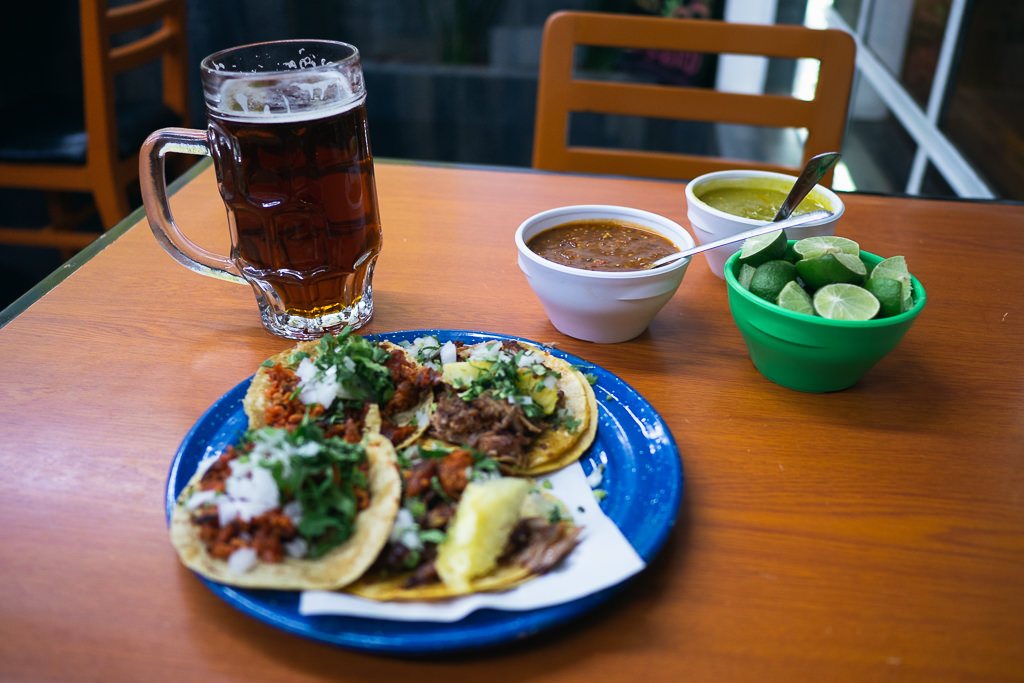
Getting around is also fairly inexpensive with many bus companies offering tickets for as low as a few dollars per ride. And longer bus rides usually don’t exceed USD $25. Finally, cultural activities are usually either free or really cheap!
If your budget is really stretched, I would recommend spending more time in Chiapas and other places in the interior, as you’ll have more options when it comes to lodging as well as cheaper meals. The Yucatan Peninsula is usually more pricey, so maybe avoid Tulum where dinners can be around $20 per person and cocktails are $10, unless you really avoid the expensive beach bars.
Just be mindful and you’ll be good. Regardless of inflation and changing exchange rates, backpacking in Mexico is still totally doable on a budget.
Do You Need to Know Spanish?
If you’re sticking to a backpacking route through Mexico, you won’t need to speak Spanish at all. In touristy areas, English is pretty common and almost everyone speaks it.
However, if you’re going off the beaten path or heading to remote towns and villages, then yes! You should learn some basic Spanish before your trip.
If anything, just knowing a few phrases like “hola“, “gracias“, “por favor” and my favorite “una mas cerveza!” will go a long way with the locals. The more you know, the easier it will be to navigate around the country.
So don’t be afraid of the language barrier, take it as an opportunity to learn something new and dive into culture.
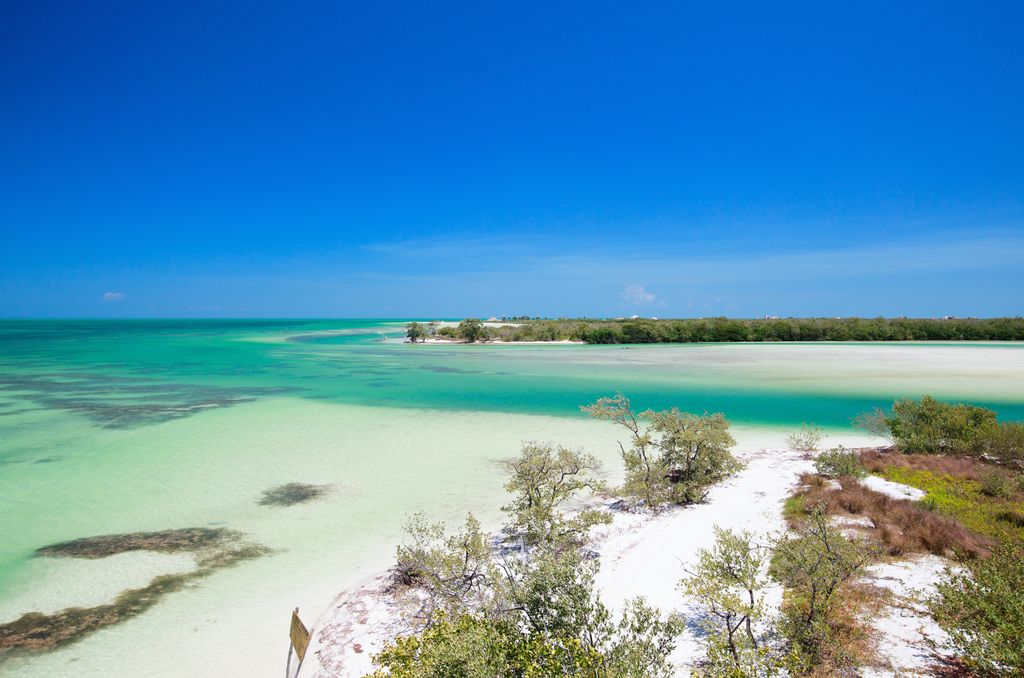
How to Get Around
Booking buses is really easy. ADO (Mexico’s main bus company) has an app in which you can search for routes and book your tickets. You can also use the booking platform 12Go which offers tickets from a range of bus companies.
Taxis are also everywhere, just make sure to negotiate the price before getting in. Sometimes it may take some persistence, but they usually get there!
Rates vary depending on where you are. In bigger cities like Mexico City, you can find Uber and Cabify.
In other towns, you can jump on a collectivo (local bus) and get to your destination for just a few dollars. It’s what all the locals take and while it might be hot and crowded, it’s the cheapest way to get around besides walking.
Finally, renting a car is an option for those who want to explore more freely. It’s not too expensive, usually starting around $20 per day with no additional charges or fees. While few backpackers would do their whole trip this way, getting a small crew together and sharing a rental car is a great way to do some local sightseeing at your own pace.
In some places, you can also rent scooters or motorbikes, though this is sadly not as common as in other parts of the world like Asia. I’ve mostly had success finding good/cheap motorbike rentals in beach places.
When you’re planning your trip, I would advise you to have an overview plan of when and where you want to be somewhere. However, with so many people backpacking I recommend having some flexibility to explore and go with the flow.
And there you have it, your guide to backpacking in Mexico! Get ready for late nights, delicious food, and some of the best vibes you’ll ever experience.
Buen Viaje!
Some links may be affiliate links, meaning I may earn commission from products or services I recommend. For more, see site policies.
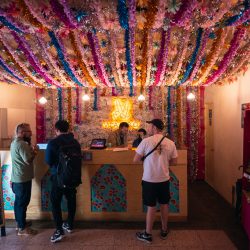
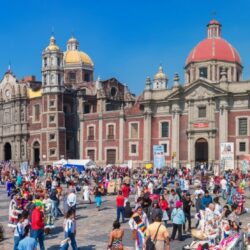




0 comments
Leave a comment
Your email address will not be published. Comments are manually moderated.